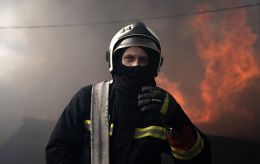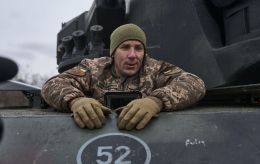Why the West restrains Ukraine from striking Russia and hesitates to protect country's airspace
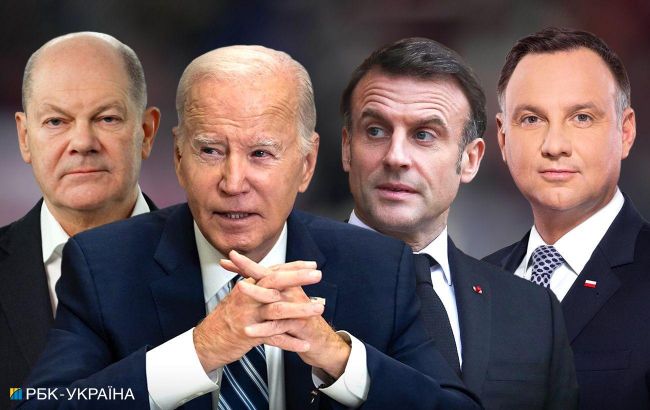 The West still fears an escalation against Russia over aid to Ukraine (collage: RBC-Ukraine)
The West still fears an escalation against Russia over aid to Ukraine (collage: RBC-Ukraine)
Since the beginning of Russia's full-scale invasion, Ukraine has been asking its allies to help close the skies. Along with this discussion, another one has been revived in recent months amid the Russian offensive in the Kharkiv region - the authorization to launch strikes on Russian territory. RBC-Ukraine's article explains why the West has been holding back for so long and what Ukraine can expect.
Contents
Ever since the beginning of Russia's full-scale invasion, Ukrainian politicians and diplomats have been asking Western partners to help close the skies from Russian missiles and aircraft. Back then, in the early days, the Ukrainian air defense system was, attacked by Russian strikes and it did not have the means to shoot down ballistic missiles such as Iskander-M, which Moscow often used in the first months of the great war.
Western partners continue to help Ukraine with air defense equipment piecemeal. At first, by providing old Soviet systems and anti-aircraft missiles, with which Ukrainian units have already had experience. And only then - Western, more powerful systems such as NASAMS, IRIS-T, Patriot, and SAMP/T. Of these, only the latter two can fight ballistic missiles.
So far, however, the allies have not dared to shoot down Russian missiles themselves, either in Ukrainian skies or in their airspace. Ukraine's neighbors in the Alliance have repeatedly turned a blind eye when Russian cruise missiles or UAVs have flown into their territory while shelling Ukrainian territory.
After two years of Russia's full-scale war, Ukraine's leadership has once again begun to actively call for NATO members to help shoot down Russian targets on foreign platforms. Since March, Russia has increased its use of ballistic missiles, shelling Ukraine's civilian infrastructure and energy system. And Ukraine's existing air defense systems - including those capable of hitting Kinzhals, Iskanders-M, Onyx-M, or Zircon - are insufficient to cover most of the Ukrainian territory.
The allies still lack unity on this issue; another important discussion is currently on the agenda. A lot of Russian aircraft dropping guided aerial bombs, MLRS, military depots, and operative-tactical missile systems based in Russia continue to remain out of range of Ukrainian troops. This is not because Ukraine does not have the means of the required range. This is because not all of these weapons are allowed by Ukraine's allies to be used for strikes directly on Russian territory.
Can NATO help close the skies over Ukraine
A fresh impetus to the debate about the Alliance's ability to hit Russian missiles was given by Iran's shelling of Israel. Then the United States, Jordan, and the United Kingdom joined to repel the massive air attack. After that, representatives of Ukraine's government began asking Western countries to consider the same option for Ukraine.
In practice, NATO countries can help shoot down Russian missiles in two ways. One is to deploy their Patriot air defense systems along part of the border. To the west, Ukraine borders four NATO countries.
“As strange as it may sound now, we have more anti-aircraft missile systems even with our very limited capabilities than most NATO countries. If we talk about Poland, it has only three Patriot batteries, which were supposed to replace the C-200 and two more British Sky Sabre (CAMM-ER) air defense systems. This is the end of Poland's modern air defense systems list. They still have 15 old C-125s, because they gave some of them to us,” Ivan Kyrychevskyi, an expert at the Defense Express information and consulting agency, explains.
The situation in Romania is no better. The source adds that Bucharest has four Patriot systems, but only one is in service, while the other three are being mastered by personnel. In addition, there are a dozen Hawk systems that protect the Romanian capital. They also have about five more old Soviet S-75 air defense systems on paper, Kirichevskyi says.
Slovakia has only its Soviet systems in service, and Hungary received its first NASAMS systems at the end of 2023. It is not known for certain whether they would even agree to join the defense of Ukrainian territories, given the position of the current governments of these countries.
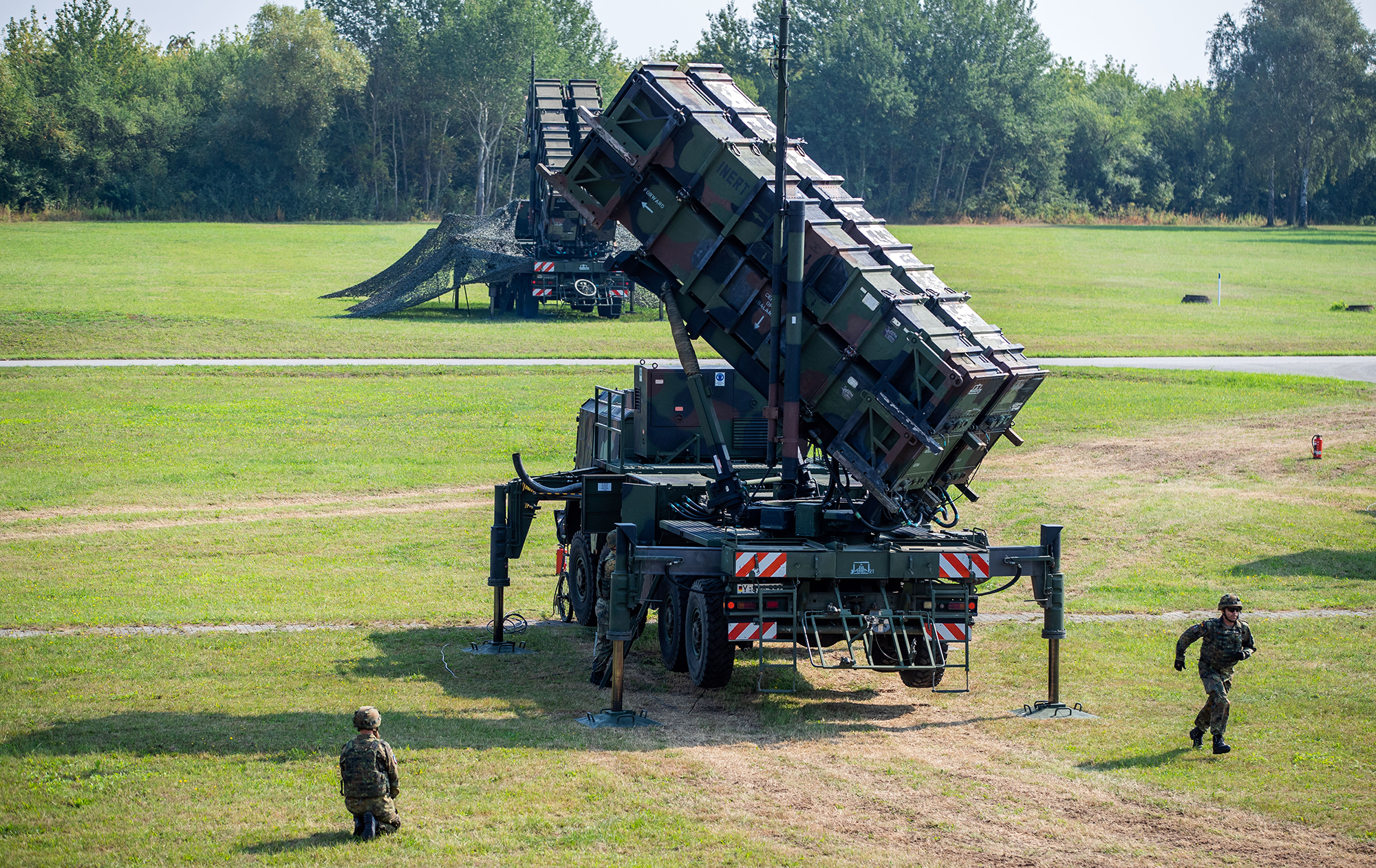 Ukraine's neighbors have several Patriot batteries that they could deploy on the border (photo: GettyImages)
Ukraine's neighbors have several Patriot batteries that they could deploy on the border (photo: GettyImages)
“It even turns out that the involvement of NATO missile systems to shoot down Russian missiles with the capabilities that our neighbors have may not help. But we still need to achieve this. Because, as far as I understand, no one has rejected this option, when NATO units will shoot down Russian missiles from Ukrainian territory, but no one is actively discussing it either,” Kyrychevskyi adds.
In theory, other countries of the bloc - not just Ukraine's neighbors - could deploy their own air and missile defense systems on the border. However, such a decision would still have its nuances.
“Assuming that NATO countries do decide to close the skies over Ukraine, they will have limited technical capabilities to do so. Their means will be able to cover only a part of the regions in western Ukraine - Zakarpattia, Lviv, Ivano-Frankivsk, and Chernivtsi. And they will still only be able to cover the border areas. This, in my opinion, is the only option,” says Oleksandr Kovalenko, a military and political observer at the Information Resistance group.
The Patriot system has a range of up to 160 kilometers against cruise missiles, UAVs, or airplanes. This means that this system can hit Russian targets at a distance of 140-160 kilometers from the border.
“But do we have any problems with hitting cruise missiles or Shaheds? We shoot them down with a probability of 80-100%. That is, we hit most of the targets, and this figure is higher than the norms used in the calculation of NATO standards. Our main problem is ballistic protection. If a certain area is not protected by Patriot, SAMP/T, or the Israeli David's Sling system, these ballistic missiles will hit the targets,” says aviation expert Kostiantyn Kryvolap.
Anti-aircraft missiles for the Patriot - MSE, which are designed to combat ballistic missiles, have a shorter range - a maximum of 40 kilometers. This greatly reduces the defense capabilities of these systems if they are deployed on the border.
“Even if we cram the borderline with these Western complexes, they will only be able to protect the Yavoriv training ground from ballistic missiles. There are no other facilities that can protect our partners' complexes in this area: neither Lviv, nor Stryi, nor Ivano-Frankivsk,” Kryvolap says.
Such a solution - only hypothetically - can be effective only if the Allies decide to fully assume the protection of Ukrainian territories from cruise missiles in the 160-kilometer zone from the western borders. At the same time, additional cover from this type of missile can be provided by Western fighters from our partners' fleets, which will operate from the border. They can also fight only cruise missiles or UAVs. Instead, the Ukrainian command can move its complexes from the western regions to other, less protected areas.
Another way is for partners to deploy their systems and anti-aircraft missile units directly on Ukrainian territory, and they will shoot down Russian missiles or UAVs in Ukrainian airspace. This will be purely defensive: they will not kill Russian pilots and it should not be seen as aggression against Russia, which the collective West is so afraid of. However, such a decision is likely to have even fewer supporters among the Allies.
“If such an operation were to take place, it would probably be conducted from the territory of the Alliance, which is also technically possible, given the range of air defense systems. However, for this to happen, it is also necessary to reach an agreement with Kyiv on the possible damage and casualties that could be caused by the actions of NATO forces,” Dariusz Materniak, a security expert and editor-in-chief of the Polish-Ukrainian portal polukr.net, tells RBC-Ukraine.
He adds that Poland faces the same problem when Russian missiles violate its airspace. In theory, it can shoot down such missiles. However, if they do not pose a direct threat to Poland, they are not shot down because there is no guarantee that this will not cause destruction and casualties on one side of the border or the other, Materniak says.
The main obstacle to closing the skies over Ukraine is not even technical, but purely political. The West is still afraid that any step they take could be interpreted by Moscow as an escalation and involvement in the war.
“On the one hand, there are no technical obstacles to this decision, but on the other hand, it is a purely political decision that should be made not by the Poles, not by Western partners, but by one person only - Joseph Biden. The Patriot system is an American-designed system, so it is the United States that can authorize its use,” Kryvolap says.
The same, for example, applies to the use of F-16 fighters or NASAMS systems, which are US developments. Germany, which is a supplier of IRIS-T air defense systems to the global market, has a similar position.
Why the West hesitates to authorize strikes on Russia
Whenever the United States or other allies of Ukraine have provided long-range weapons to Ukraine, the default assumption has been that they can only be used within Ukrainian territory. Such warnings and conditions were probably voiced during non-public negotiations on the weapons.
After the Russians opened a new front in the Northeast, such rules of the game began to constrain the Ukrainian Defense Forces too much. The entire rear of the Russian occupation forces, which are advancing into the Kharkiv border region, is located on Russian territory. The Ukrainian army was essentially unable to strike at warehouses, troop locations, reserves, and equipment to stop and push back the Russian troops. The motives for the West's indecision were the same as in the case of the sky closure: fear of escalation and direct involvement in a war with Russia.
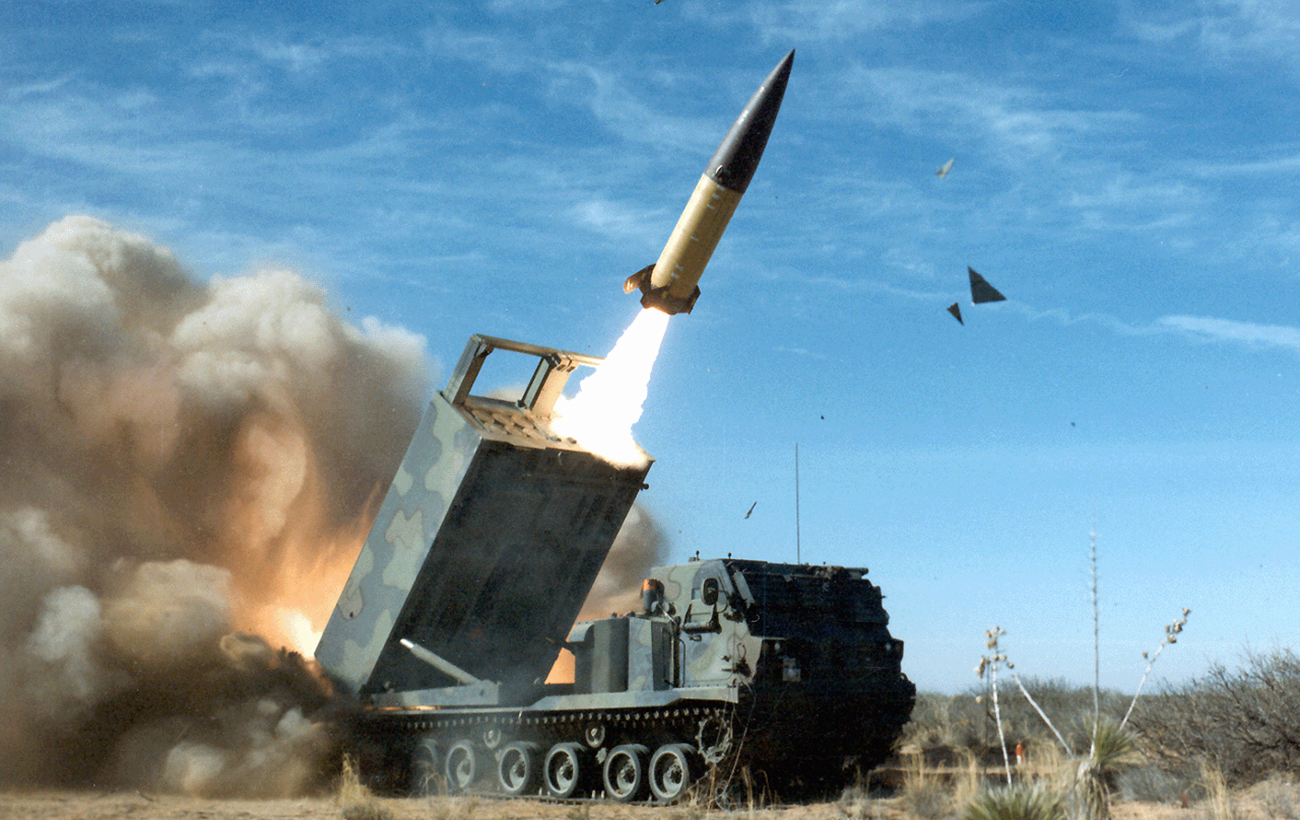 Before the Russian offensive in the Kharkiv region, many countries, including the United States, did not allow their weapons and missiles to be used to strike Russia (photo: army.mil)
Before the Russian offensive in the Kharkiv region, many countries, including the United States, did not allow their weapons and missiles to be used to strike Russia (photo: army.mil)
“Individual NATO countries have different approaches to this issue, as they assess Russia's actions differently and are more or less afraid of the potential consequences, which is also related to the different types of weapons they provide to Ukraine: of course, the greatest opportunities for potentially hitting a target deep in the territory of the Russian Federation are provided by weapons from the United States, so the greatest caution is on the American side. The situation can be changed by humanitarian reasons, as in the case of the situation around Kharkiv,” Materniak says.
According to Kyrychevskyi, all these formal authorizations and prohibitions may not even involve the use of Western weapons, but rather information. After all, what's the point of launching ATACMS across Russia without knowing where? More than a year ago, The Washington Post wrote that for the vast majority of strikes by Western missile systems on Russian targets, Ukraine receives coordinates or confirmation of them from the United States and its allies.
“If you listen closely to what our officials are saying and how the Americans are responding, the issue is not really about political permission. The point is that we are asking for a regular flow of intelligence, i.e., that this data should be available 24/7. By analogy with the shell famine, we have a data famine. Therefore, we are not asking for formal permission to hit the territory of the Russian Federation with American missiles, but rather for data on Russian targets that we could strike,” the source says.
More than a dozen countries have publicly confirmed that they allow their weapons to be used to strike Russia. These include Latvia, Lithuania, Estonia, Poland, Finland, Sweden, the Netherlands, Norway, Denmark, Czechia, and Canada. UK Foreign Secretary David Cameron says that Ukraine has the right to strike military targets in Russia. A year ago, his country began to provide us with long-range Storm Shadow missiles. However, according to Volodymyr Zelenskyy, there has been no absolute permission from the UK yet. After all, it is still unknown which Russian territories are covered by the permission of France, which also provided Ukraine with its version of Storm Shadow missiles, the Scalp.
The United States and Germany were the last countries to agree to use their weapons on Russian territory. Although, despite official statements, the American yes has its conditions. Western media wrote that Washington had authorized the use of artillery and the launch of short-range missiles from HIMARS launchers at military targets on Russian territory. But the ban on longer-range ATACMS missile launches remains in place. This narrows the geography of the use of these weapons - the Ukrainian Defense Forces will be able to use them only along the northern borders, near Kharkiv, Sumy, and Chernihiv regions.
At the same time, some foreign media wrote that the US authorization applies exclusively to Russian areas bordering the Kharkiv region. This was confirmed in a comment to The Guardian by the Ukrainian President's administration. Volodymyr Zelenskyy, in turn, says that he wants to see in practice how this will happen. But, according to him, this is not enough.
So far, there have been several countries that, on the contrary, have opposed strikes against Russia. This includes Italy, for example, and Spain's position remained unclear. It can be assumed that after Washington's consent, these countries, like Germany, will also adjust their position. The limited authorization from the United States demonstrates that they are still cautious about Russia and are drawing their red lines that can and cannot be crossed.
Sources: The Washington Post, The Guardian, The Wall Street Journal, analysts Oleksandr Kovalenko, Ivan Kyrychevskyi, Kostiantyn Kryvolap, and Dariusz Materniak.
